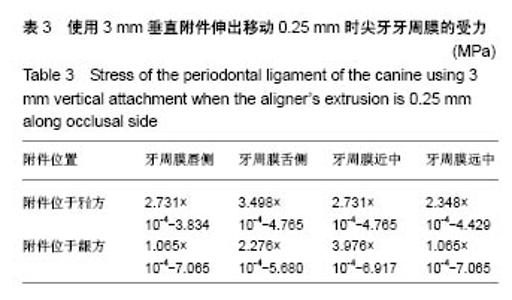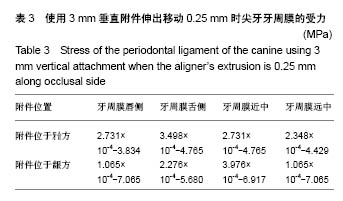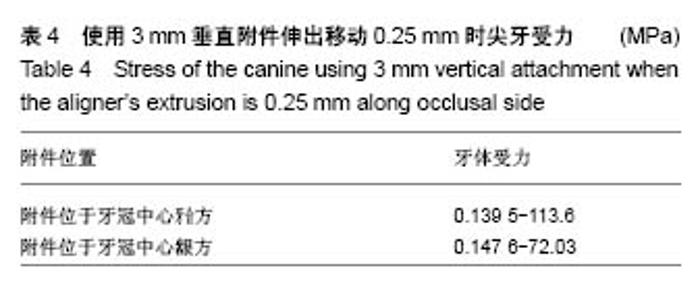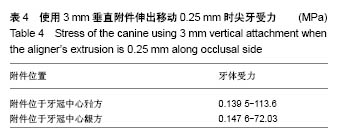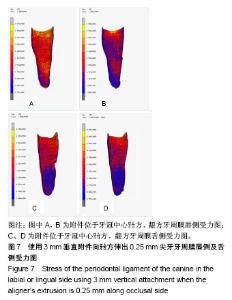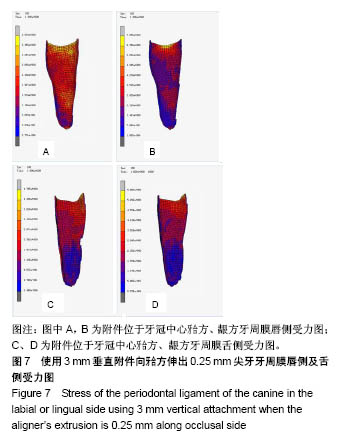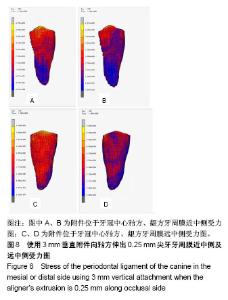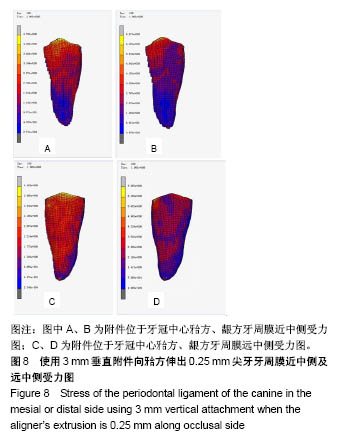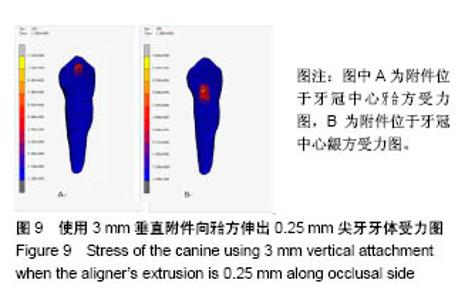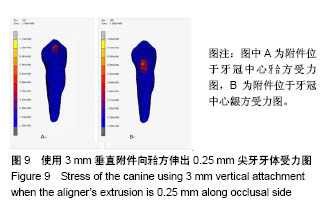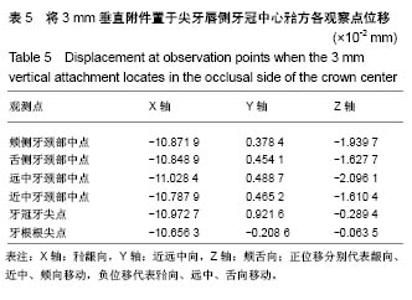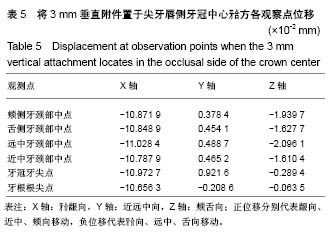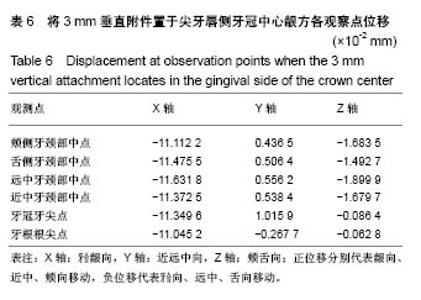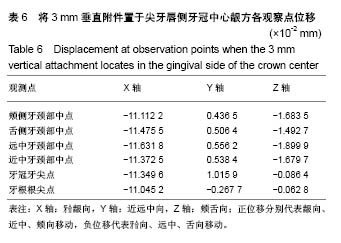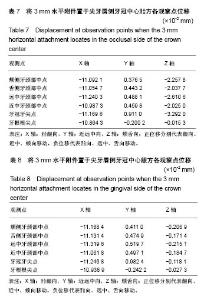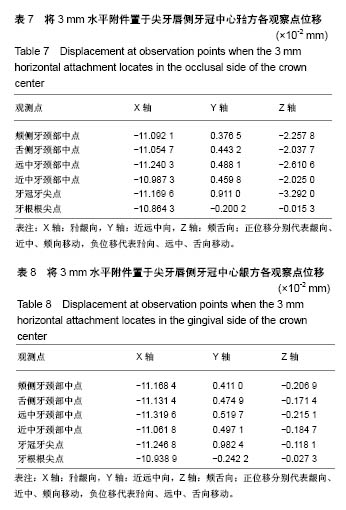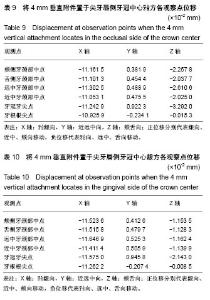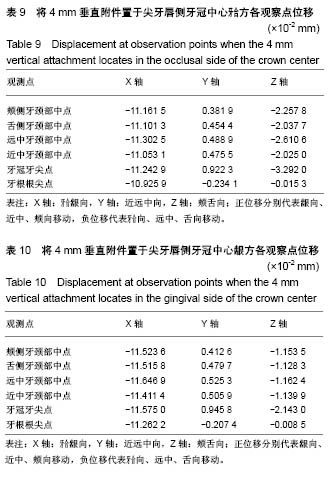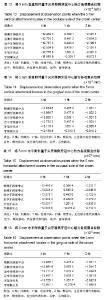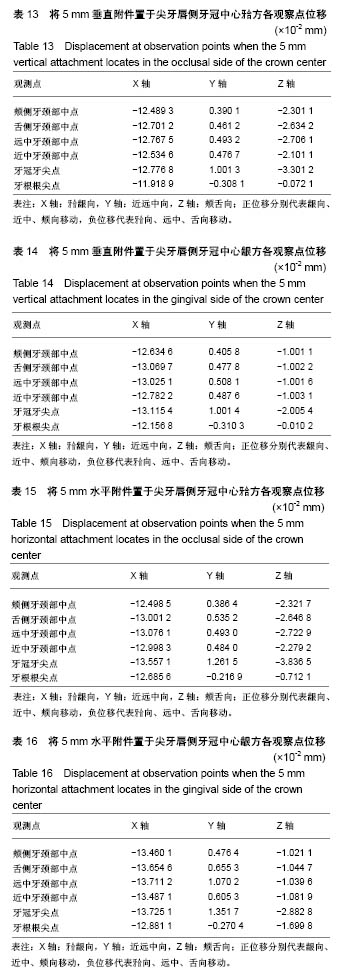| [1] Cattaneo PM,Dalstra M,Melsen B.Strains in periodontal ligament and alveolar bone associated with orthodontic tooth movement analyzed by finite element.Orthod Craniofac Res.2009;12(2):120-128.[2] Baek SH,Shin SJ,Ahn SJ,et al.Initial effect of multiloop edgewise archwire on the mandibular dentition in Class III malocclusion subjects. A three-dimensional finite element study. Eur J Orthod. 2008;30(1):10-15. [3] 白玉兴,王凡,祁鹏,等.无托槽隐形矫治技术与固定矫治技术尖牙远中移动的有限元对比分析[J].现代口腔医学杂志, 2009,23(3):261-264. [4] Comba B,Parrini S,Rossini G,et al.A Three-Dimensional Finite Element Analysis of Upper-Canine Distalization with Clear Aligners, Composite Attachments, and Class II Elastics. J Clin Orthod.2017;51(1):24-28.[5] 陈琳,吴嘉桦,辜为怀,等.无托槽隐形矫治器远移上颌磨牙的疗效评价[J].实用口腔医学杂志,2017,33(2):203-207.[6] 夏舒迟,卢燕勤,韩景芸,等.不同硬度隐形矫治器关闭中切牙间隙的有限元分析[J].医用生物力学,2013,28(6):654-658.[7] 郑钰婷,陈琳,吴嘉桦,等.无托槽隐形矫治器整体内收上颌前牙的三维有限元分析[J].实用口腔医学杂志,2017,33(5):621-624.[8] 蔡永清,杨晓翔,何炳蔚.无托槽隐形矫治器各参数对尖牙压低移动治疗的影响[J].医用生物力学,2017,32(1):60-65.[9] Kojima Y,Fukui H.A numerical simulation of tooth movement by wire bending.Am J Orthod Dentofacial Orthop. 2006;130(4):452.[10] Toms SR,Lemons JE,Bartolucci AA,et al.Nonlinear stress-strain behavior of periodontal ligament under orthodontic loading.Am J Orthod Dentofacial Orthop. 2002;122(2):174-179.[11] Boyd RL.Esthetic orthodontic treatment using the invisalign appliance for moderate to complex malocclusions.J Dent Educ.2008;72(8):948-967.[12] Barlattani A Jr,Mampieri G,Ottria L,et al.Invisalign treatment in periodondal patient: case report.Oral Implantol. 2009;2(4):35-39.[13] 顾泽旭,田杰,李变瑢,等.无托槽隐形矫治技术中附件的应用[J].实用口腔医学杂志,2010,26(1):130-133.[14] 连月梅,白玉兴,厉松.正畸无托槽隐形矫治器附件两种粘结方法的比较[J].北京口腔医学,2010, 18(2):108-109.[15] 刘倩.附件对无托槽隐形矫治器固位力的影响及牙齿移动效率三维测量系统的建立[D].西安:第四军医大学, 2013.[16] Dermaut LR,Vanden Bulcke MM.Evaluation of intrusive mechanics of the type "segmented arch" on a macerated human skull using the laser reflection technique and holographic interferometry.Am J Orthod. 1986; 89(3):251-263.[17] 苏杰华,刘佳莉,张端强,等.上颌前牙段阻抗中心定位的有限元研究[J].生物医学工程学杂志,2014,31(5):994-1000[18] Burstone CJ,Pryputniewicz RJ.Holographic determination of centers of rotation produced by orthodontic forces.Am J Orthod.1980;77(4):396-409.[19] 何艳.不同角度磨牙后倾曲对上颌前牙段牙齿及其牙周膜初始应力分布的研究[D].重庆:重庆医科大学,2007.[20] 韦代伦,黄思源,周吉,等.唇舌侧托槽伸长压入力学性能的有限元分析[J].中国现代医学杂志,2017, 27(9):49-53.[21] 王波,张桂香,石晶,等.自锁托槽矫治器矫治初期上颌异位侧切牙及牙周组织应力的三维有限元分析[J].国际口腔医学杂志, 2015,42(4):406-410.[22] Orhan C.Tuncay.口腔正畸无托槽隐形矫治临床指南[M].白玉兴主译.北京:人民军医出版社,2008:77-98.[23] 王凡,白玉兴,祁鹏,等.无托槽隐形矫治尖牙整体移动的生物力学研究[J].医用生物力学,2007, 22(2):133-136.[24] Simon M,Keilig L,Schwarze J,et al.Forces and moments generated by removable thermoplastic aligners: incisor torque, premolar derotation, and molar distalization.Am J Orthod Dentofacial Orthop. 2014;145(6):728-736.[25] 张划.不同矫治量不同厚度无托槽隐形矫治器产生的矫治应变的电测法测定[D].长沙:中南大学,2011.[26] 郁雯科.无托槽隐形矫治器远移尖牙的有限元分析[D].杭州:浙江大学,2016.[27] 李德水.无托槽隐形矫治器过矫正设计牙齿移动效率的对比研究[D].济南:山东大学,2016.[28] Fujiyama K,Honjo T,Suzuki M,et al.Analysis of pain level in cases treated with Invisalign aligner: comparison with fixed edgewise appliance therapy. Prog Orthod.2014;15(1):1-7. |
